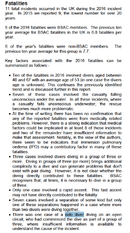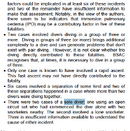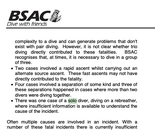There is absolutely no evidence or data that diving with a pony will make you safer.
Nor is there any evidence that diving with a pony bottle doesn't make you safer.
There is more fatality among solo divers.
What's your evidence of this? If there is real evidence, how many of the solo divers were wearing pony bottles or had redundancy?
There is more fatality among tech divers.
Compared to what, rec divers? Ok, maybe, but how many of them die because they run out of gas? It does happen, but there are also fatalities related to other things that make this comparison moot.
Tech divers work as team btw, just like rec diving teams. You also accept more risk.
This is not true. Many tech divers dive solo, and even if they are team diving, they are ideally self-sufficient. If a CCR diver has a problem with the rebreather. What do they do? Bailout to open circuit, i.e. a pony bottle. . .
Carryover the practices from other types of diving that are solving very different risks/probabilities is not making rec diving safer or in anyway better.
Let me be momentarily pedantic - one does not solve risk. A risk is something like an earthquake or a tornado. They exist and you can't make them go away. You can however mitigate risk. Your mitigations may solve specific problems. For example, if I shore up the supports of the building, it should not collapse under the strain of a 6.5 earthquake. That is risk mitigation.
Risk mitigation reduces the likelihood of a certain problem resulting in a catastrophic outcome. Simply, risk is a problem I cannot solve, and risk mitigation is the solution to the chance of that risk rearing it's ugly and uncontrolled head.
Let's go back to scuba and do an ad-hoc risk analysis. What are the things that can kill me diving? I can have a heart attack or another physiological problem unrelated to my diving. I can be lost/left behind at the surface. I can have a injury related to ascent - DCS, AGE etc. I can have an animal encounter and be stung/bitten/etc. that results in my death. I can run out of air, possibly due to error or because I become lost or trapped underwater. There's probably others, but let's look at these problems.
1. Heart attack etc - I can go to the doctor, exercise, not smoke etc. I can't mitigate my biological risk underwater, though I would argue that having a buddy present were something catastrophic to occur, would help mitigate the chances of death
2. Getting lost or left - I can carry signaling devices, and EPRIB, or a PLB. I can make sure that there's a roster of divers when I get in the water and I'm diving with a reputable operation.
2. .Animal attack: In every open water class I've reviewed, there's a portion that says, don't touch the animals and most scuba diver injuries are the result of defensive action by the animal. Education of divers to avoid situations is teaching them to mitigate their own risks. There may be other specific things that divers have learned locally or anecdotally that work as well. Not wearing shiny things to avoid attracting barracuda for example. Both of these mitigate the risk of having a negative encounter with an animal that results in death or injury.
4. Running out of gas and ascents related to ascent - I can try ensure my buddy and I stay within a second or so of each other. I can check my SPG. I can have a rock bottom gas plan. Assuming my buddy is close and can adequately assist me, this does mitigate risk, but I cannot ensure that my buddy will not become lost while I'm not looking thus that is not a bulletproof mitigation.
The 2019 DAN Annual Diving Report lists 124 Recreational, 12 Tech and 57 Breath-hold divers that died.
"At least two dives were intended as solo dives. For most dives, the buddy status at the beginning was not known. Of those who started with a buddy, six ended up separated, but there is no evidence that it was intentional.
In some cases, the disappearance of the victim was not noticed immediately, and in other victims left the group and did a rapid ascent to the surface."
Scuba diving is like flying in that it isn't one mistake or problem that kills you, it's two problems.
In scuba diving, if my buddy is my air source, and (1) we become inadvertently separated - no big deal, I find my buddy.
If I have a (2) catastrophic gas failure, I can use my buddy's octo and head for the surface.
Combine them however, and I have a major problem that may result in DCS, an AGE or both as well as drowning. Adding a pony bottle mitigates the risk here because it eliminates one problem, and makes my problem manageable.
I think most DIR training also subscribes to the philosophy of being able to solve two problems at the same time, but even if that's not the case, consider the following (very unlikely, admittedly) problem:
Three DIR divers are swimming along at 90 feet doing a rec dive on AL80's. Their trim and buoyancy are perfect. They have a rock bottom gas plan. Suddenly one diver runs out of gas. Buddy 1 donates to Buddy 2 and then Buddy 3 runs out of gas. Without a redundant air source, someone has a serious problem that could result in death of injury to the whole team. If 3 has a pony bottle, everyone happily ascends to their safety stop and has a great story.
The simplest answer is that redundancy is an effective mitigation strategy. We don't need a study to tell us that. That's the purpose of logic.






